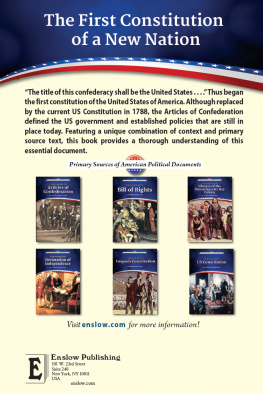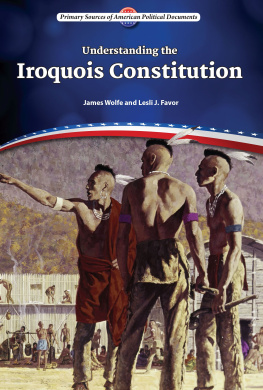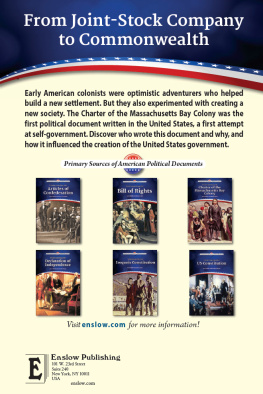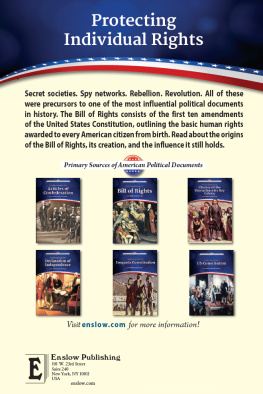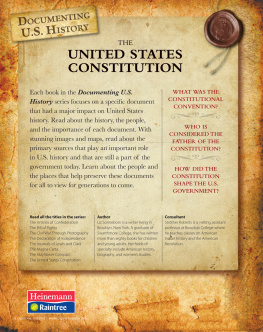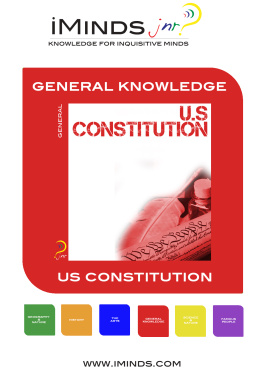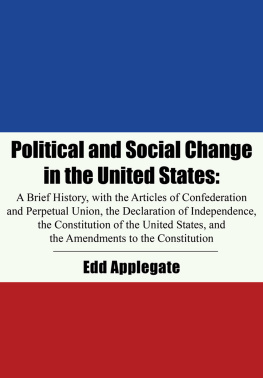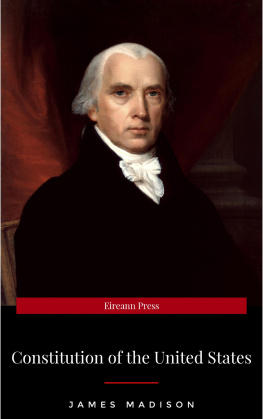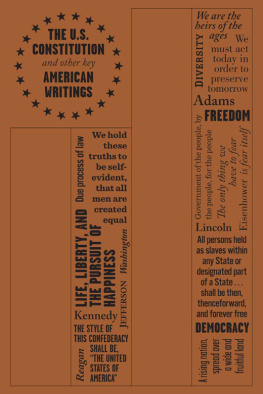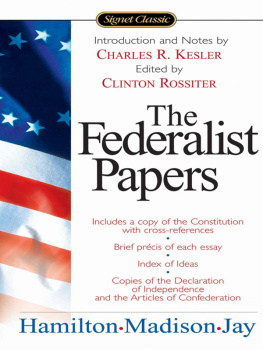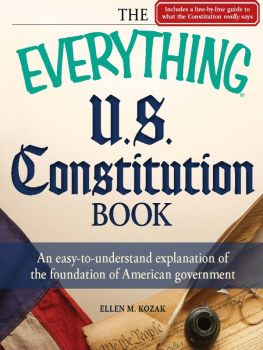Published in 2016 by Enslow Publishing, LLC.
101 W. 23rd Street, Suite 240, New York, NY 10011
Copyright 2016 by Enslow Publishing, LLC.
All rights reserved.
No part of this book may be reproduced by any means without the written permission of the publisher.
Library of Congress CataloginginPublication Data Wolfe, James, 1960 author.
Understanding the Articles of Confederation / James Wolfe and Kerry P. Callahan.
pages cm. (Primary sources of American political documents)
Includes bibliographical references and index.
ISBN 9780766068667
1. United States. Articles of ConfederationJuvenile literature. 2. Constitutional historyUnited StatesJuvenile literature. 3. United StatesPolitics and government17751783Juvenile literature. I. Callahan, Kerry P., author. II. Title.
KF4508.W65 2015
342.73029dc23
2015008035
Printed in the United States of America
To Our Readers: We have done our best to make sure all Web site addresses in this book were active and appropriate when we went to press. However, the author and the publisher have no control over and assume no liability for the material available on those Web sites or on any Web sites they may link to. Any comments or suggestions can be sent by email to .
Photo Credits: Allies .
Cover Credits: Everett Historical/Shutterstock.com (George Washington at Convention of 1787); Allies Interactive/Shutterstock.com (title splash); Augusto Cabral/Shutterstock.com (logo and spine button).
Contents
Americas First Constitution
The Steps Toward Revolution
Challenges in Refining the Articles of Confederation
Setting Up the New Nation
An Imperfect Document
Appendix: The Articles of Confederation
Glossary
Further Reading
Web Sites
Chapter Notes
Index
Chapter One
Americas First Constitution
I. The Stile of this Confederacy shall be The United States of America.
II. Each state retains its sovereignty, freedom, and independence, and every power, jurisdiction, and right, which is not by this Confederation expressly delegated to the United States, in Congress assembled.
III. The said States hereby severally enter into a firm league of friendship with each other, for their common defense, the security of their liberties, and their mutual and general welfare, binding themselves to assist each other, against all force offered to, or attacks made upon them, or any of them, on account of religion, sovereignty, trade, or any other pretense whatever.
The Articles of Confederation
O n July 4, 1776, thirteen North American colonies officially declared their independence from imperial British rule. Their desire for autonomy had developed over a number of years in response to mounting disagreements regarding Britains jurisdiction in colonial affairs. As the Revolutionary War (17751783) raged on, representatives of the thirteen states met to draft Americas first constitution, the Articles of Confederation and Perpetual Union. This document would recognize an alliance between the states and foster the new countrys economic and political survival.
The political movement for independence had developed over a number of years in response to mounting disagreements regarding Britains jurisdiction in colonial affairs. Prior to the Revolutionary War, relatively few Americans contested the authority of the British Parliament, as Parliament was the legislative branch of the British government that served the king or queen. However, most questioned its ability to represent Americans, and, consequently, its authority to levy taxes in America. No taxation without representation was a common colonial protest, even though the concept of taxation by consent was not invented during the Revolutionary era. Understandably, American philosophical and political thought was heavily influenced by British conceptions of natural rights and personal responsibility. Written in thirteenthcentury England, the Magna Carta was the first document to address constitutional rights. Embracing the idea of taxation by consent, the Magna Carta declared that no scutage [a tax paid in lieu of a knights military service] or aid should be imposed unless by the common counsel of the realm.

The Declaration of Independence was signed in Independence Hall in Philadelphia, Pennsylvania.
Following the lead of the seventeenthcentury British philosopher John Locke, many eighteenth century Americans believed that a republican government gained its authority from the people and that the people or their representatives held the sole authority to tax. All other bodies operated in violation of democratic principles as they exercised arbitrary rule.
It is important to note that the ideals of individual liberty, personal freedom, and participation in the political process hinged on ones place in eighteenth century America. A narrow understanding of who constituted the peopleone that excluded black men and women, white women, propertyless white men, and Native Americansled to a limited application of the rights, privileges, and powers assigned in documents such as the Declaration of Independence and the Articles of Confederation. This is not to say that disenfranchised peoples did not continue to develop their own communities and spheres of influence in spite of restrictions placed upon their individual and collective freedoms. Rather, they acknowledged that the Articles of Confederation was a plan of governance devised by white, propertied men who wielded official legal and political authority within the colonies.
Many colonists were also heavily influenced by a popular political party in Britain, the Whig Party. Whigs adhered, at least in theory, to an idea of personal freedom that centered on the individual. Whigs maintained that the king governed only with the peoples consent. Extending this logic, Americans believed that, as they were not represented in Parliament, they had no way of providing their assent to parliamentary regulations. Therefore, any assessment of taxes made by Britain was considered undemocratic.
The British, on the other hand, believed that Parliament represented the colonists through a kind of virtual representation. Parliament did not only speak for its constituents in Britain, but also for imperial interests. It represented the British Empire as a whole. This disagreement over representation fueled Americas stance against parliamentary authority over colonial affairs and shaped the governmental structure that would come to be outlined in the Articles of Confederation.
The Articles
This first constitutional agreement made between the thirteen American states was drafted in July 1776 and officially ratified by March 1787. The final draft consisted of a preamble and thirteen articles. The Articles defined the relative powers of the individual states and the Continental Congress. The framers of the Articles of Confederation created a government based on the sovereignty of thirteen separate states. Representatives from each state met in an assembly called Congress to discuss and promote matters of common concern. Congress acted as the legislative, judicial, and executive body of the government. The Articles of Confederation embodied the traditional view of republican government reflected in the first state constitutions. Like state constitutions, the Articles of Confederation favored the legislative as opposed to the executive or judiciarybranch of government.

